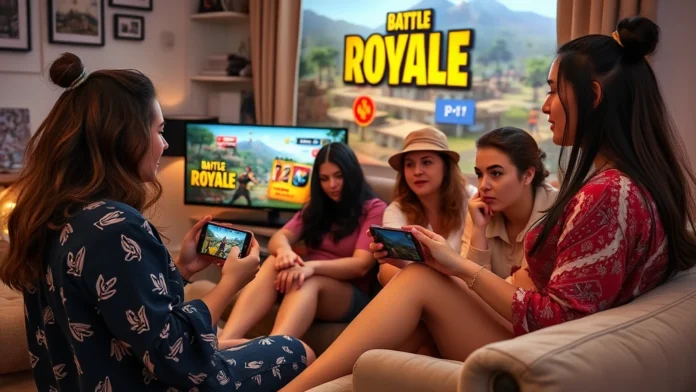The wireless connection between smartphones and televisions has become an increasingly popular trend, particularly in the realm of mobile gaming. This connection allows users to enjoy their favorite games on a larger screen, enhancing the overall gaming experience. Wireless technology has enabled seamless streaming from mobile devices, offering the potential for more immersive gameplay by leveraging the benefits of a television’s larger display. Whether it is battling opponents in PUBG or engaging in intense matches in Free Fire, the transition from a small screen to a larger one presents numerous advantages for gamers.
One of the primary benefits of connecting your phone to a TV is the enhanced immersion that comes from the larger viewing area. Players can appreciate intricate details in their games that may often be missed on smaller mobile screens. This increased visibility provides a more engaging gameplay experience, as users can easily spot enemies or appreciate graphics that contribute to the overall atmosphere of the game.
Setting Up Your TV for Wireless Connection
Establishing a wireless connection between your smartphone and television is an essential step for enjoying gaming and other multimedia experiences. The first task is to confirm that your TV is equipped with wireless technology capable of interacting with your mobile device. Most modern televisions come with built-in support for wireless connection protocols such as Miracast or Chromecast. Refer to your television’s user manual or specifications to ensure compatibility.
Once compatibility is verified, proceed to access the settings menu on your television. Typically, this can be done by pressing the ‘Menu’ or ‘Settings’ button on the remote control. Navigate to the network options, where you should find settings pertaining to screen mirroring or wireless display functionality. It is important to enable these features, as they allow your TV to connect to a smartphone and display its content wirelessly.
To connect your phone and TV seamlessly, ensure both devices are connected to the same Wi-Fi network. This is crucial, as it facilitates communication between the devices. Check your phone’s Wi-Fi settings and ensure they match the network selected on your TV. If you encounter connectivity issues, restarting both the smartphone and television can often resolve problems. Additionally, verify that your phone’s operating system and the TV’s firmware are updated to the latest versions to avoid any compatibility troubles.
Connecting Your Phone to the TV
Connecting your smartphone to your television opens up new avenues for entertainment, particularly for wireless gaming. The process may vary slightly depending on the brand and model of your phone and TV, but certain steps remain consistent across devices. To begin, ensure that both your smartphone and TV are on the same Wi-Fi network. This is crucial for creating a seamless connection.
Next, access your phone’s settings by navigating to the Display or Connectivity section. Look for options like “Screen Mirroring,” “Cast,” or “Smart View,” which are commonly found in Android devices. For iPhones, the “Screen Mirroring” option is available in the Control Center. Once you tap on this option, your phone will start scanning for available devices. Make sure Bluetooth is also enabled on your phone to enhance connectivity.
Your TV should display as one of the available devices. Selecting your TV from this list will typically prompt an on-screen message to confirm the connection. If your TV requires a pairing code, simply input that code as prompted. Once established, you may notice slight delays or lag during initial connection attempts. To mitigate this, close any unnecessary applications running in the background on your smartphone and ensure that no other devices are consuming bandwidth on your Wi-Fi network.
For gamers, optimizing the connection is essential for an uninterrupted experience. It is advisable to use a 5 GHz Wi-Fi band if available, as it provides higher speeds and reduces latency compared to 2.4 GHz. Additionally, reducing the distance between your phone and TV can help maintain a strong signal. Some dedicated apps also enhance the gaming experience by providing specific optimization settings. With these steps, you can enjoy a fluid and responsive gaming experience on a larger screen without the physical constraints of wires.
Optimizing Your Gaming Experience
When connecting your phone to your TV for wireless gaming, optimizing the gaming experience involves several key adjustments that can greatly enhance performance and enjoyment. First and foremost, it is essential to adjust the game settings on your device to achieve better visuals. Increasing graphical settings can improve the overall aesthetics of the game, making it more engaging. However, it is crucial to find a balance, as higher settings may lead to reduced performance on some devices.
Another vital component of optimizing your gaming experience is minimizing input lag. To do this, ensure that both your phone and TV settings are configured to prioritize low latency. Utilizing game mode settings on your TV, if available, can reduce input lag for a more responsive gaming experience. Additionally, a direct Wi-Fi connection is preferable to avoid disruptions caused by distance or interference.

